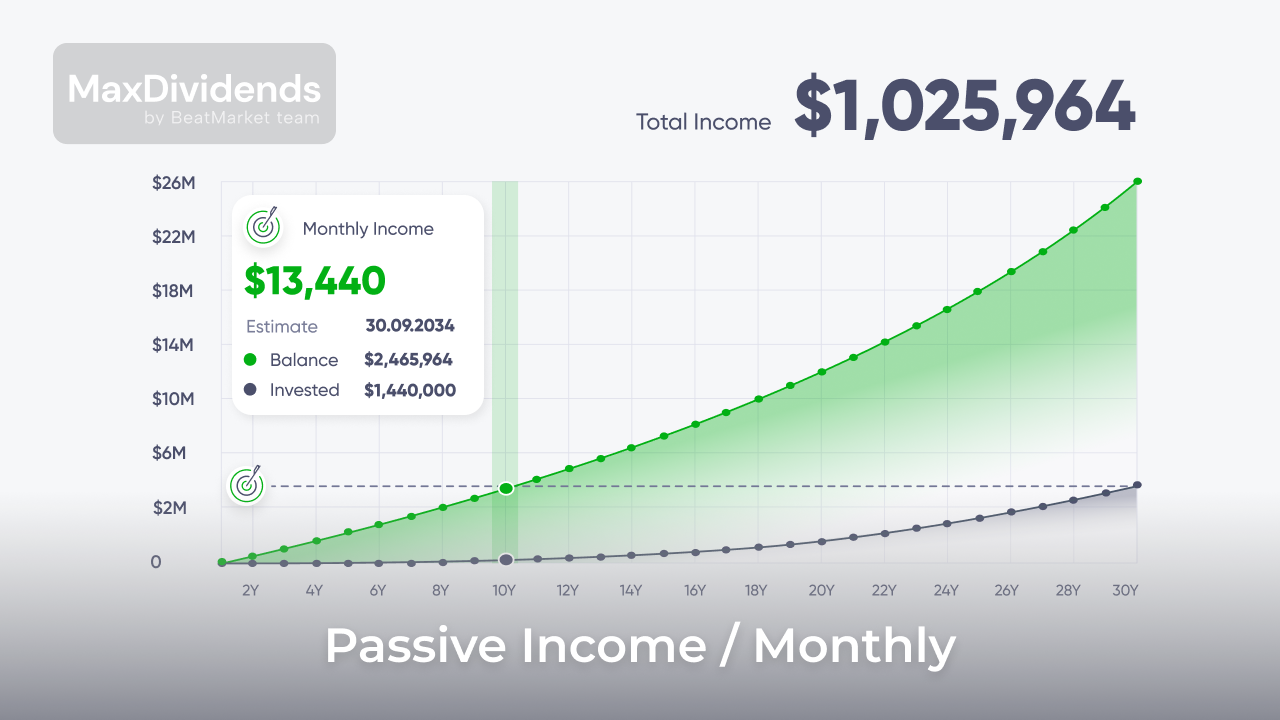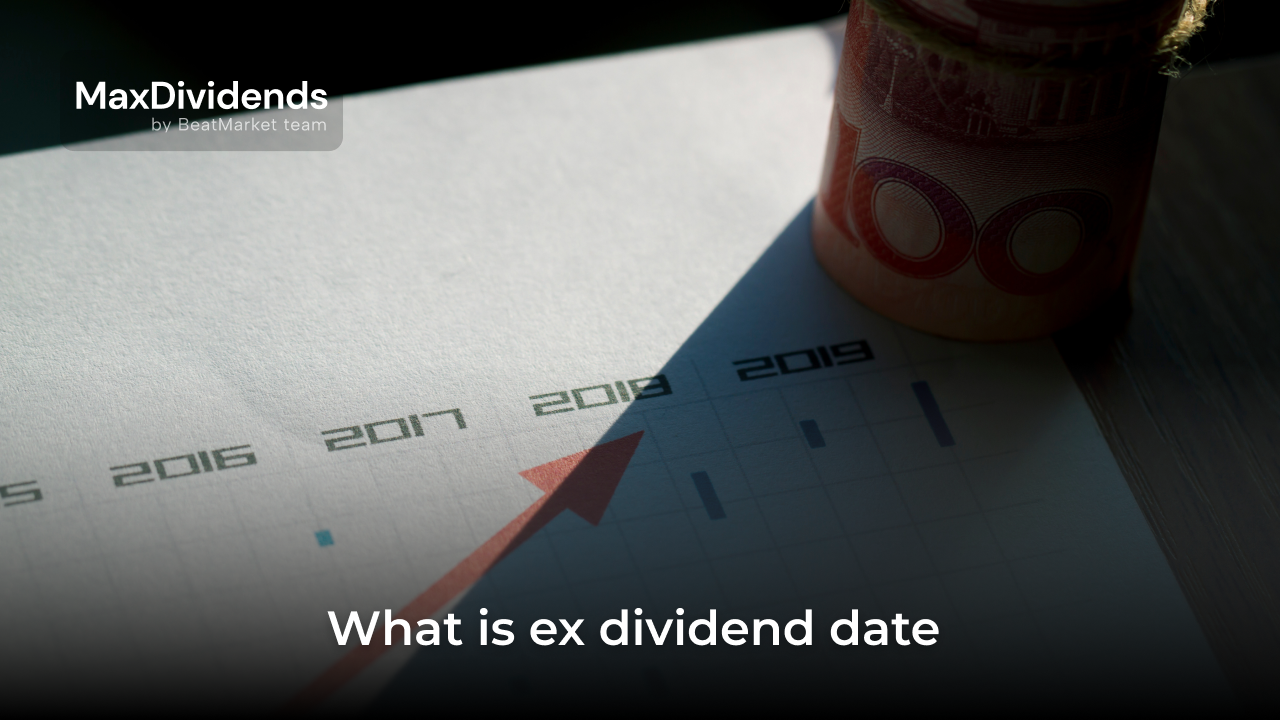Creating capital in the stock and bond markets is a great way to put your money to work and ensure your financial independence. The following quick guide will help you take the first steps.
Table of Contents
How to Start Investing when You’re a novice
There is no one-size-fits-all scheme for making money in the financial markets that would be proper for anyone, regardless of their income level and goals.
The following guide is intended to help you understand which strategy is preferable in this or that case. It will also help you avoid the most common mistakes made by beginners.
Step 1: Have a Fully Stocked Emergency Fund
Having an emergency fund accumulated is the most important thing to prepare for starting investing for dummies. Financial advisors recommend having enough money in reserve to cover 3-6 months of a person’s normal lifestyle.
An emergency fund serves as a guarantee that assets will not have to be sold in case of illness, job loss, etc. This is especially important when the need for money arises in the first few years after the start of investment and during a bear market. In such a situation, without a financial “cushion” you will have to record a loss.
This fund is kept in instruments that imply the possibility of a quick return without loss of investment. A high-yield savings account is proper for this purpose.
Step 2: Make Sure Your Debt is Under Control
Time in the stock market and the “magic” of compound interest play a key role in achieving the goal of investing for dummies. Therefore, one should start as early as possible.
When a person waits decades to pay off student loans, mortgage debt, etc., they will miss out on precious time. But rushing to invest without considering one’s financial situation is also a mistake.
Deciding whether to put the money towards investing or paying off some of the debt should be based on interest rates:
- average annual return of the S&P 500 from 1957 to 31 December 2022 – 10.15%;
- average annual return of the Nasdaq-100 over its 38 years of existence – 16%;
- average interest rate on credit cards – 24.58% at the end of July 2023.
It is doubtful that investing in the stock market for dummies will prove to be highly profitable from the first years. Therefore, it is wise to first get your personal finances in order, close debts with a high interest rate (above the average yield of the S&P 500), and only then invest.
Step 3: How Much Money Should You Start Investing in the Stock Market?
The common belief that one needs to have hundreds of thousands of dollars to make money on the stock market is wrong. Many brokers offer favorable conditions for investing for dummies:
- no minimum deposit requirements;
- possibility to make transactions with fractional stocks;
- no commissions per transaction.
Having chosen such a broker, you can invest even a few dollars. Yet, to have a wider choice of assets and opportunities for diversification, it is advisable to start with $100 or more.
Here is a simple example of the first step in investing for dummies starting with $100 (not a financial recommendation):
- a stock of SPDR Portfolio S&P 500 ETF (SPLG) – costs less than $53;
- 2 stocks of iShares U.S. Treasury Bond ETF (GOVT) – about $22.5 each.
Having $1000, one can already put together a balanced portfolio of assets based on mutual and exchange traded funds with the addition of individual stocks.
Step 4: Define Your Tolerance for Risk
Even broad market indices don’t grow linearly. Investments in growth stocks or small businesses offer great potential returns. However, they can turn out to be exceptionally loss-making.
Risk tolerance is the ability to see drawdowns in your brokerage account and still continue to follow your chosen investment strategy.
With a proper risk profile, a person will perceive periods of correction and bear markets as an opportunity to reduce the dollar value of positions. With low risk tolerance, it is a mistake to invest in assets with high volatility. There is a chance that the investor will sell the quotes at a loss at the first drawdown.
Small questionnaires offered by brokers and robo-advisors when opening an account will help to determine risk tolerance and the list of preferred asset classes.
Step 5: Decide on Your Investment Goals
One of the prerequisites for success is proper goal setting. It determines the investment horizon and the ability to accept risk.
The set of assets to be used and the proper type of investment account will depend on the goal set. The goal can be:
- saving money for large purchases, a down payment on a house, children’s education and other targeted expenses;
- creating a source of passive income;
- building up retirement capital.
It is important to analyze regularly whether the chosen strategy is helping to move closer to the intended outcome.
Step 6: Determine Your Investing Style
There are 3 fundamentally different approaches to the term:
- Independent trading on the stock exchange. Requires at least basic knowledge of how to select assets.
- Contacting a financial advisor, transferring capital to trust management. Due to high commissions, it is advisable only when it comes to amounts over $100 thousand.
- Using a robo-advisor, managing the investor’s portfolio. Advantage – low commission, which makes such programmes profitable even with a small capital. The disadvantage is limited possibilities of strategy personalisation.
Which approach to choose depends on a person’s knowledge, willingness to spend time studying the market or rely on the professionals’ experience.
Step 7: Choose Your Investment Account
Choosing an account type is one of the most important steps before starting investing for dummies. There are several types of investment accounts available in the United States. Which one to open depends on a person’s financial goals. All the options offered can be divided into 2 categories.
The first includes types of investment accounts that qualify for tax benefits. The main ones are retirement plans.
All the instructions recommend joining a corporate retirement plan first. This offers the following benefits:
- Automated deductions. The employer himself transfers the agreed amount to the account. The person cannot spend this money. This option is proper for those with poor financial discipline.
- Additional contributions. In addition to a part of the employee’s salary, the employer contributes a similar amount (within certain limits) to their retirement account. This allows to significantly increase profitability.
- Tax benefits. With a traditional 401(k) form, a person pays no tax on the amounts contributed to the account. At the same time, one’s capital also grows without tax deductions. They only arise when the money is withdrawn. A Roth 401 (k) is completely tax-free on investment income, but not on the amount deposited.
The main disadvantage of retirement account investing in a corporate plan is the limited set of assets. Only mutual funds are likely to be offered to the investor. Stocks of individual companies, real estate investments, etc. are not available under most corporate plans.
Restricting trading to risky assets is a good solution in retirement investing for dummies. Though, sometimes investing in mutual funds is unprofitable due to high management fees.
The second type of retirement plan is an individual retirement account. It can also be of 2 types – IRA and Roth IRA. Here a person is not limited in securities available for investment. But, most likely, the return on an invested dollar in such an account will still be lower. This is due to the lack of additional contributions from the employer.
Other types of target-date investment accounts also offer tax benefits – plans intended to save for tuition, medical expenses, etc.
Common disadvantages of tax-advantaged investment accounts:
- limits on the maximum replenishment amount per year;
- restrictions on withdrawals;
- possible penalties for early and improper use of accumulated capital.
The second category of investment accounts is the standard taxable brokerage account. When using it, a person does not receive tax exemption. But at the same time, they are not restricted in any way in the available assets or in the desire to withdraw money.
Any brokerage account can be of 2 types – independently managed and transferred under the control of a robo-advisor or in trust management to an expert.
Step 8: Learn to Diversify and Reduce Risk
Diversification is the allocation of capital to different investment vehicles. A portfolio can be diversified across different asset classes:
- lending investments;
- investments in stocks of individual companies;
- real estate investments, etc.
The second way to diversify is to allocate capital within the same asset class across different issuers and industries. For example, it is possible to create a set of stocks including companies of different capitalisation, operating in different sectors, etc.
The main purpose of diversification is to reduce the impact of a single security on the total portfolio value.
Index funds of stocks and bonds are the simplest way in terms of diversification.
Learn the difference between investing in stocks and funds
ETFs are collective investment funds with stocks that can be bought on the stock exchange. They are designed to simplify investing for dummies and make asset diversification more accessible to private investors with small capital.
When choosing to invest in ETFs, one should pay attention to the following factors:
- the index copied by the fund;
- the amount of management fee;
- the fund size and the management company’s credibility.
The net assets of most ETFs are a well-diversified set of securities. For example, the SPY ETF includes stocks of 500 companies listed in the S&P 500 Index.
Meanwhile, the stock price of this fund is less than $500. Having bought it, the investor will get a share in the securities of 500 issuers at once. To compile such a set of assets on your own, multiples of that amount would be needed.
ETF stocks are a great first step. But exchange traded funds have a disadvantage – low potential returns. It will not exceed the market average.
When a person invests in stocks of individual companies, in theory, they can build a portfolio of market leaders whose quotations will show a multiple growth. But in reality, for a beginner, it is an extremely improbable result. Even experienced investors managing hedge funds do not succeed in overtaking the market consistently over decades.
In addition, stock investments in individual companies requires much more time to analyze the market, financial position and fundamentals of the selected issuers.
Buying ETFs can also be considered an optimal solution when it comes to bond investing for dummies. First of all, there are bond funds, with one stock costing much less than $100, which can be important for a beginner with a small capital. Secondly, it reduces the risks of investing in high-yield debt.
Another type of fund is REITs. Buying their stocks is the easiest way to start real estate investing.
Set a budget for your stock market investment
An important preliminary step is to properly allocate capital between different asset classes. The most popular strategies of investing for dummies:
- 60% be invested in stocks, 40% in bonds;
- 90% be invested in broad market ETFs, 10% in fixed income government debt;
- allocate capital equally between stocks, bonds, gold and cash.
Which strategy to choose should be determined based on your own financial capacity, investment horizon and risk tolerance.
But investing a certain amount of money one time is not enough. The account must be replenished on a regular basis. That is why it is important to make your budget and find out how much money you can put into your investment account without affecting your daily life.
Even putting aside $100 a week will significantly improve an investor’s financial situation over the course of decades.
Focus on investing for the long-term
The best advice for a novice long-term investor is not to monitor the portfolio (excluding rebalancing moment). The reason for this is that short-term market fluctuations do not have a significant impact on the result at the end of decades.
An investor should realize that 10% per year is an average. During some periods there may be much greater growth, while during other periods there may be a failure in portfolio value.
Tracking short-term quotes fluctuations will be a waste of time and will make you doubt the chosen strategy.
Manage your stock portfolio
The term portfolio rebalancing means bringing the asset allocation back to the one originally selected.
Different asset classes fluctuate in price in different ways. Usually, stocks become more expensive while the price of bonds remains relatively stable. Therefore, after some time, a person may see that instead of the original 60/40 ratio, they have a 70/30 ratio, etc. It is recommended to perform rebalancing at least once a year.
It is also useful to occasionally review the chosen asset ratio. When an investor is approaching their financial goal, it may be advisable to reduce the proportion of risky assets.
Best stocks for beginners
The best stocks to buy for beginners in the stock market, according to financial advisors, are ETFs that track the S&P 500 index. This is due to the fact that such investments:
- do not require in-depth knowledge;
- less risky than investing in individual companies;
- financially accessible to people with little capital;
- provide returns above inflation.
When a beginner is interested in investing in individual companies, they need to learn fundamental analysis and how to determine the fair value of a stock.
Use Dollar-Cost Averaging
Buying cheaply and selling expensively sounds easy. The best strategy of investing for dummies is averaging the dollar value of a position. This approach frees us from doubts in choosing the right entry point to the market.
The essence comes down to the fact that the investor at certain intervals buys chosen stocks regardless of how their value has changed.
For example, a person transfers a certain amount of his salary to a brokerage account every month and invests this money in a set list of securities. In this case, in periods of high prices for the fixed amount, the person will be able to buy fewer stocks than during a bear market.
In accordance with statistics, the average price obtained in this way turns out to be no less favorable than when trying to guess the “bottom” of the market. At the same time, being constantly in the position gives profit at the expense of dividend payments.
When to Sell a Stock
Understanding when to sell stocks is an equally important part of an investing strategy. It will keep you from making emotionally driven trades in a falling market.
The most common advice on investing for dummies is to never sell stocks when there is no need to withdraw money from a brokerage account. This is because attempts to lock in a few percent of profit and then re-enter a position after a correction often lead beginners to losses.
A buy-and-hold strategy is proper for index exchange traded funds. When it comes to an individual company, however, it’s important not to get attached to your original choice.
When a stock no longer fits the strategy, the issuer has business problems, it may be helpful for the investor to recognise that the choice was a failure and lock in the loss before it grows further. An investing decision criteria for selling a stock should be:
- reduced revenue and net profit;
- reduced dividend payments;
- growing company debts and other fundamental factors.
Another issue to consider when deciding to sell a stock is tax payments. When a person has owned a security for more than a year, the profit received from its sale will be considered long-term capital gain and taxed at a reduced rate.
The desire to lock in a loss in order to reduce the total profit from securities transactions for the year and thus pay less tax is another reason to sell stock.
Step 9: Make Investing a Habit
The main rule of investing into stocks for dummies is that buying assets once is not enough. To achieve a significant financial result over a horizon of decades, it is important to constantly replenish your brokerage account. This is a prerequisite for implementing a dollar cost averaging strategy.
There are 2 charts in the figure below. They show the result of an investor, who started with $10 thousand, overtaking the portfolio of the investor who invested $100 thousand once, due to annual replenishments, at the end of 30 years.
The Costs to Invest in Stocks
There are inevitably costs associated with stock investing. This category includes:
- Brokerage fees for the transaction, record keeping and securities custody, etc.
- Management fees (when it comes to ETF stocks or mutual funds).
- Mutual fund loads (commissions on the purchase and sale of securities). But the best mutual funds in the U.S. have already eliminated such deductions.
- Financial advisor or robo-advisor fees.
Buying and selling debt securities also involves the brokerage commission costs. When the option of bond investing for dummies, i.e. through mutual and exchange traded funds, is chosen, management fee costs cannot be avoided.
How Do Commissions and Fees Work?
With a small capital, commissions can significantly reduce the return on investment. For example, some brokers may have a commission of $10 per transaction.
Let’s assume that a client of such a company has $1000 and distributes it among 5 securities. He will have to pay $50 to build a portfolio. When he wants to sell these assets, he will have to pay another $50. Thus, the cost of broker’s commission will be 10% of the initial capital.
Therefore, when choosing a broker, it is necessary to assess whether its tariffs are proper for the chosen investment strategy:
- There are brokers who do not take commission for stock trades, but this is offset by other fees. They will be more favorable to someone who wants to trade small volumes frequently.
- Other brokers set the commission amount as a percentage of the transaction amount. This is the best option for someone with a small capital and infrequent transactions.
- Brokers with a fixed transaction fee are primarily oriented towards clients who trade large volumes.
Fund commissions can also significantly affect the final result. For example, when investing $10,000 in funds with management fees of 0.1% and 0.6%, the difference in returns over 30 years will exceed $15,000.
Robo-Advisors
Using robo-advisors is considered the best option for investing for dummies. They are capable of undertaking the following tasks:
- initial portfolio allocation based on specified parameters (investment timeframe, risk level, etc.);
- automated reinvestment and rebalancing;
- tax cost optimisation.
Popular among US investors, robo-advisors work even with small deposits, and the cost of using them is much lower than the experts’ rates. Basic information on them is given in the table below.
| Company | Minimum deposit, $ | Commissions per year per investor’s portfolio value, % |
| Betterment | 0 | 0.25 – digital tariff;0.40 – premium tariff |
| Interactive Advisors | From 100 | 0.08-1.5 depending on the selected tariff and deposit amount |
| M1 Finance | 100 – for standard fee500 – for retirement plans | 0 |
| Wealthfront | 500 | From 0,25 |
| E*TRADE | 500 | 0,3 |
What Is the Difference Between a Full-Service and a Discount Broker?
Discount brokers usually offer only the bare minimum of services – opportunity to make deals, a small amount of training materials, and sometimes modest market analyses. The competitive advantage of such companies is their low rates. They are proper for those who are interested in low fee stock trades rather than in additional services.
Brokers’ services with a full range are much more expensive. Turning to them, a person will get:
- assistance in retirement planning;
- tax counselling;
- training programmes;
- individual investment advice on alternative assets, real estate, IPOs, etc.
Quite often, a full-service broker is a financial house that offers clients its own investment products and mutual funds.
What Are the Risks of Investing?
General investing involves a lot of risks. And each asset class can have its own drawbacks. But the main danger that any investor can face is a drop in portfolio value and losing money instead of making a profit.
Therefore, only free capital that is not planned to be used within the next 3 or better 5 years should be invested in stocks. When the investment horizon is shorter, savings accounts, money market funds or bonds are proper. At the same time, the investor should realize that the higher the potential profitability of the chosen instrument, the greater the risks.
Don’t Let Lack of Knowledge Stop You
The second most common reason for refusing to invest after having no money is lack of knowledge. But the modern financial industry has made this argument untenable.
A person who wants to figure out how to take the first steps will find plenty of free tutorials on investing for dummies. It is also useful to read some best selling investing guides, such as The Intelligent Investor by B. Graham.
Numerous robo-advisors make a deep dive into the world of finance unnecessary. With their help, the stock market becomes accessible to people with minimal knowledge.
Opening an account managed by a robo-advisor or investing money yourself in 2-3 ETFs following the most popular indices is the best option for stocks investing for dummies.
The bottom line on investing in stocks
Key conclusions from a quick guide on investing in stock for dummies:
- To begin investing, one needs to do a lot of preparations (create an emergency fund, think about one’s goals and strategy, choose a broker with optimal commissions, etc.).
- Taking the first steps on the stock market is quite easy: one can trust a robo-advisor or start by investing in ETFs.
- Not only the start-up amount is important for capital formation, but also the regularity of account replenishment and reinvestment of the income received.
While gradually learning the laws of the stock market and the principles of company selection, an investor will be able to move from trust management or investment in ETFs to fully independent trading in individual stocks if desired.
FAQ
How should a beginner invest in stocks?
It is better for a beginner to invest in stocks through exchange traded funds tracking the S&P 500 index. Investing in ETFs for Dummies is considered the best solution as such investments provide a well-diversified basket of securities even with a small capital.
How much should you invest in stocks for the first time?
It depends on the requirements of the chosen broker to the client’s minimum deposit. But it is possible to find companies without such requirements. Another important factor is the way of investing (individual stocks or ETF funds). In the first case for an acceptable level of diversification one will need $1000 and more. In the second case, it is possible to start with $100 or less.
How should a beginner invest?
The easiest solution in investing for dummies is to join a corporate retirement plan. This provides additional income through employer contributions and often limits the available instruments to low-risk securities.
Other options include using a brokerage account managed by a robo-advisor or investing in broad market ETFs.
How do I know what stock to buy?
You can choose stocks for long-term investment based on fundamental analysis. There are many services making understanding investing for dummies easier. Among other things, they provide a selection of the best stocks.






